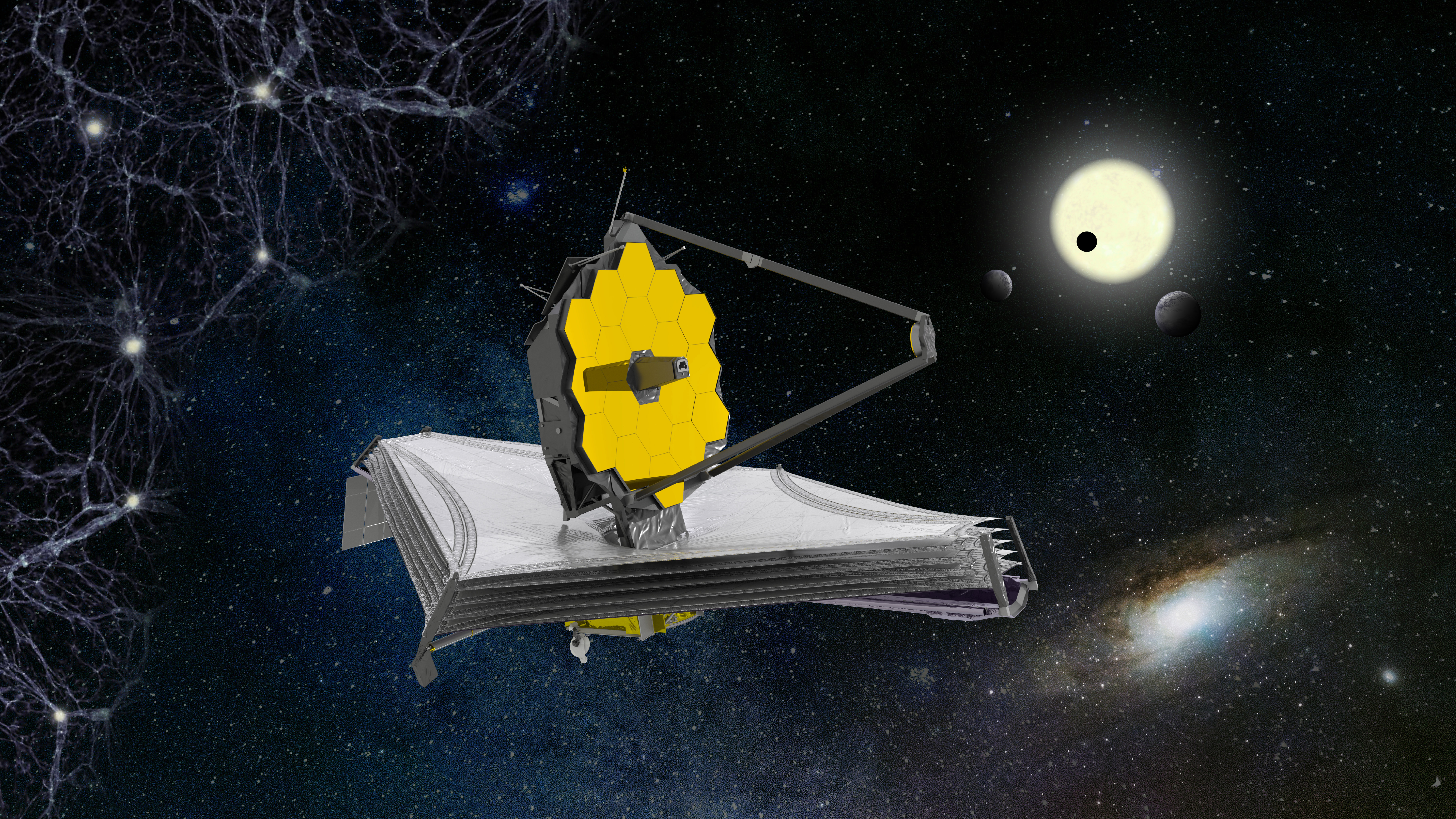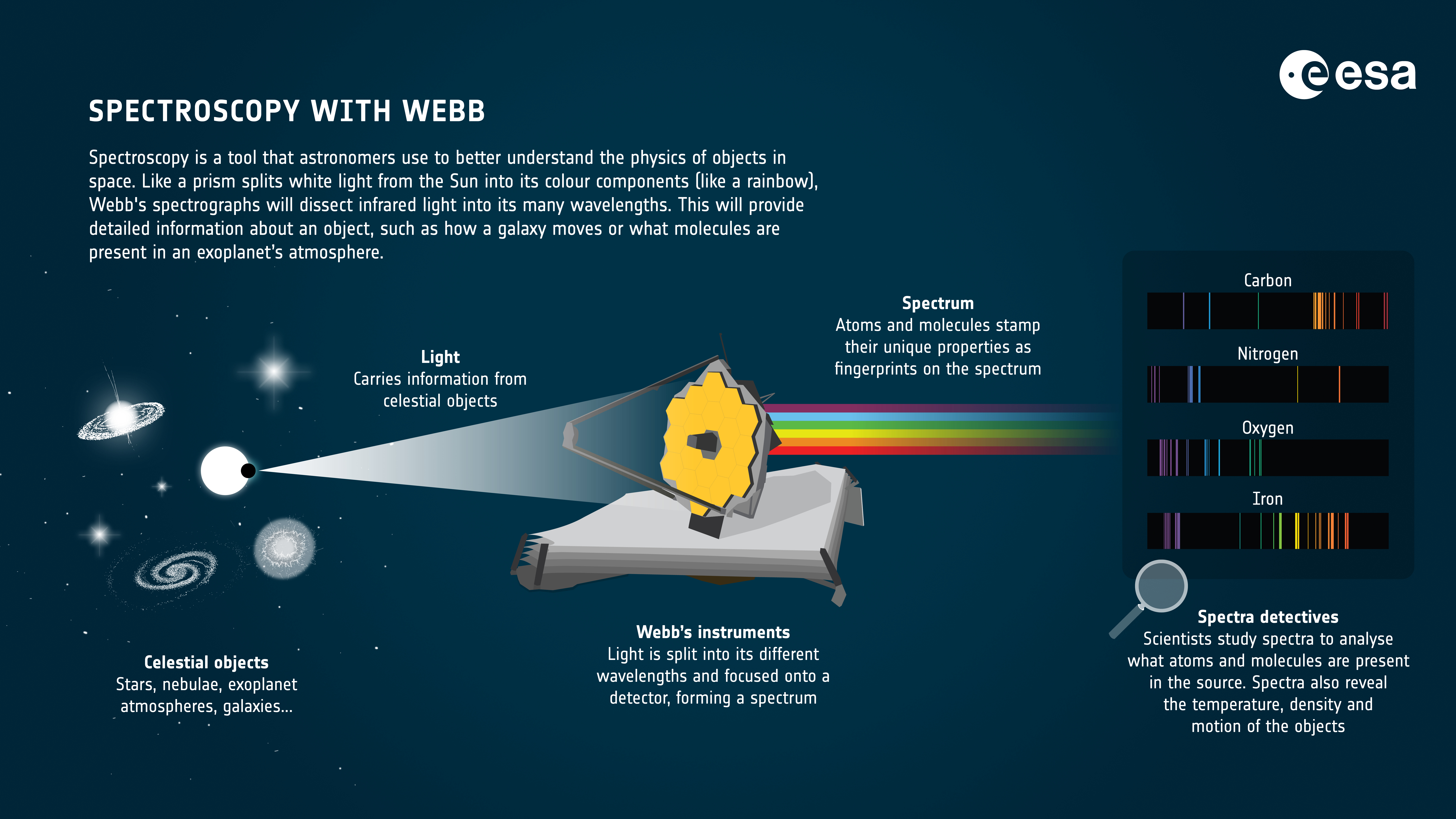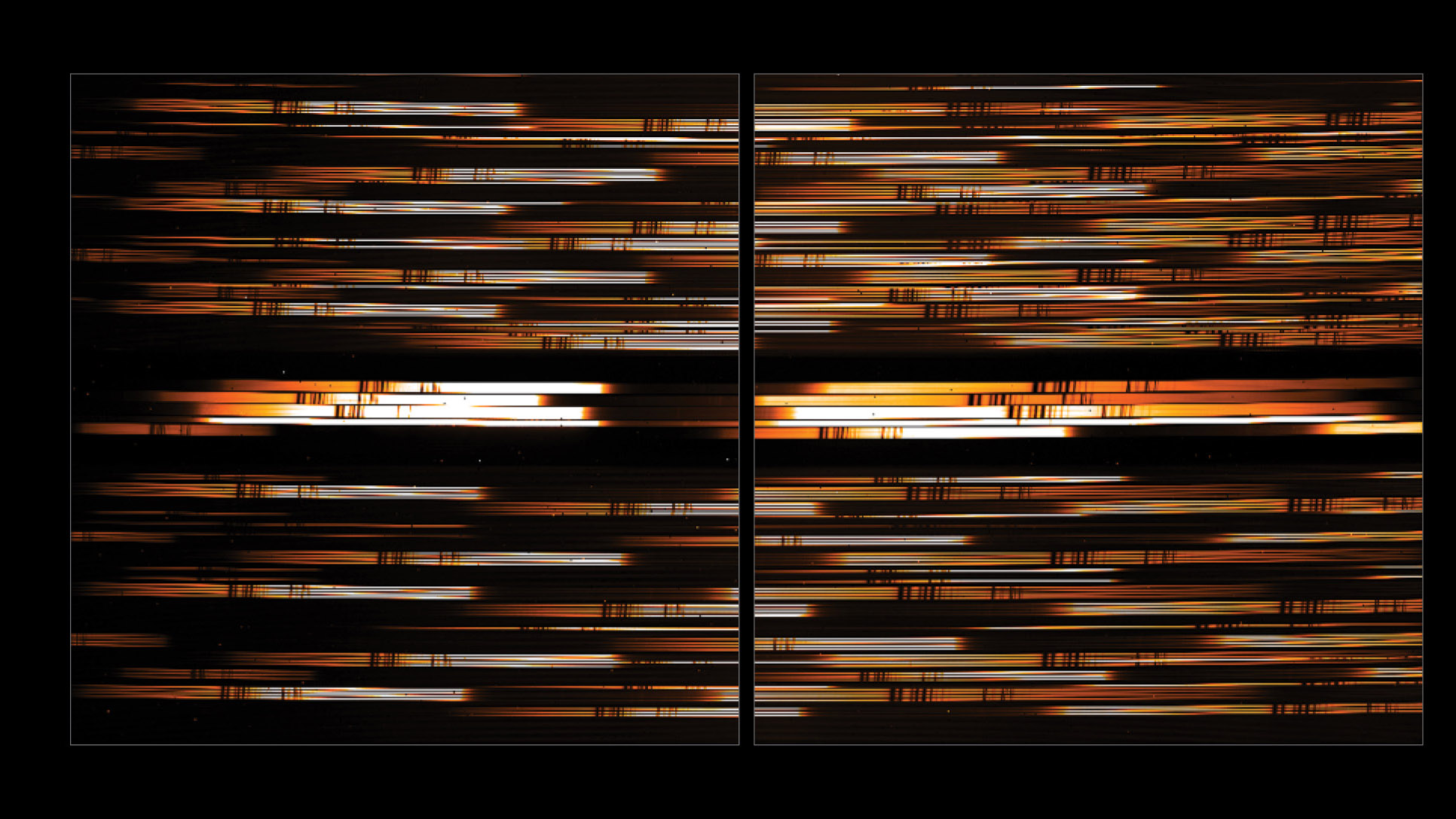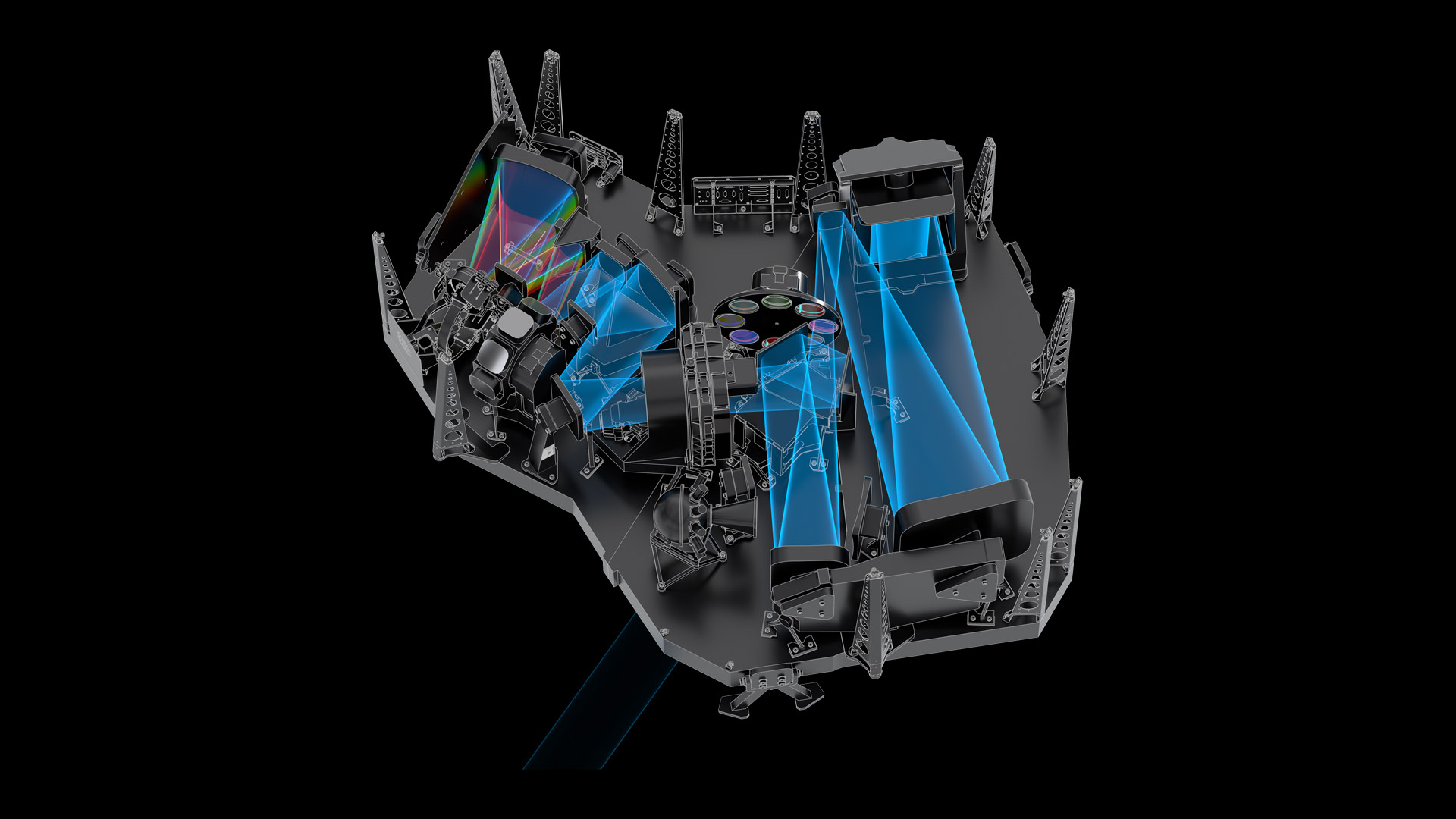James Webb Space Telescope's next-gen spectrograph can observe 100 galaxies in one go
"NIRSpec will be a game changer."

"One of the rules for building spacecraft is to have as few moving parts as possible," Andy Bunker, Oxford University astrophysicist, grins. "And that's why we have built something that has a quarter million shutters."
Bunker is talking about NIRSpec, the Near Infrared Spectrograph, one of the four instruments on the James Webb Space Telescope, that are just getting ready to open their eyes to the cosmos. He is one of seven European scientists that have shaped the design of NIRSpec (which is funded by the European Space Agency), and is now eagerly awaiting the moment when the instrument starts delivering data.
"I've always been interested in pushing the limit for the most distant known object," Bunker told Space.com. "That goes beyond simply holding the record. It's about understanding the early stages of the universe, when the first stars and galaxies formed. And we're trying to chase this."
Related: James Webb Space Telescope: The scientific mysteries no other observatory could unravel
With its giant 21.6-feet-wide (6.5 meters) mirror, Webb was built to study the oldest and most distant galaxies that emerged in the young universe from dust and gas after the dark ages following the Big Bang. It will do that by observing infrared light, the heat-carrying part of the electromagnetic spectrum with longer wavelengths than visible light. Scientists know that although those earliest stars emitted visible light, because of their vast distance and the expansion of the universe, this light shifted into the infrared part of the spectrum, an effect known as the redshift.
NIRSpec, with its rule-breaking quarter of a million microshutters, will give Webb's capabilities a boost. In fact, NIRSPec will exceed more than one hundred times the capability of a similar instrument flown on the Hubble Space Telescope, which is, in many ways, considered Webb's predecessor (although the two will work in parallel, for some time).

Galactic fingerprints
NIRSPec might not be the instrument that will produce the most eye-catching images like the famous snapshots of the pillars of creation and awe-inspiring deep fields from Hubble. That will be the task of the NIRCam and MIRI cameras.
Get the Space.com Newsletter
Breaking space news, the latest updates on rocket launches, skywatching events and more!
NIRSpec, however, will deliver an unprecedented amount of information about not only the galaxies, stars and planets photographed by NIRCam and MIRI, but hundreds and thousands of others.
As a spectrograph, NIRSpec doesn't take images. It splits the incoming light into individual components of the light spectrum. This spectrum, like a fingerprint, reflects the light-absorbing properties of the imaged objects and thus their chemical composition. Every chemical element present in the observed body absorbs light in a certain way, which shows as a distinct line in the captured spectrum. By capturing an object's spectrum, researchers can determine what chemical compounds may be present.
"Scientifically, spectra are enormously valuable," said Bunker. "There's a lot of information encoded in them. We can chart how chemical elements build up in galaxies, but also determine the distance and properties of galaxies, such as the rate at which they turn their gas into stars."
To take the fingerprints of these objects accurately, spectrographs need to block all other light from their field of view. Conventional spectrographs, like those on Hubble, do that using a slit, a narrow opening in a metal plate through which they target only the studied object.
"The slit allows you to get as sensitive as you can," Bunker said. "But the limitation is doing just one object at a time. It's very ineffective, particularly if you look at some of the deep fields where you have very high densities of potentially interesting objects."
Add to it that some of the objects Webb will study are so distant and faint that the telescope will have to stare at them for hundreds of hours to collect enough light, and the limitation of such an approach becomes obvious.

Spectrography amplified
This is where NIRSPec's microshutters come in. Each only as wide as a human hair, these micro-shutters can open in various patterns, flexibly creating a multitude of slits that will allow astronomers to observe and measure a hundred (or more) galaxies at the same time, said Bunker.
The first spectrograph of its kind flown in space, NIRSpec features a range of innovative technologies. The microshutter array itself, developed by engineers at NASA's Goddard Space Flight Center, is arranged in four rectangular sections, each having 365 by 171 microshutters.
An electrically controlled magnet sweeps at the back of these arrays. By selectively applying an electrical current to every single microshutter, the ground control teams determine, which shutters open and which remain shut. Engineers, however, can't open microshutters that are too close to each other as the spectra of the observed objects would overlap. That leaves the possibility to study around a hundred objects at the same time.
"These microshutters are quite fragile so we expect that a fraction of them will fail," said Bunker. "That's not a big deal because we will still be able to use the others. Some may also get stuck open, which would add some extra background light, but that would only be very few."

A game changer
The vast quantities of stars, galaxies, clusters, planets and other bodies NIRSpec is going to look at will enable scientists to start answering the big questions not about individual stars and galaxies, but the entire universe.
"NIRSpec will be a game changer," Bunker said. "The number of objects that we will be able to tackle will enable us to start seeing how various variables depend on each other. For example how the rate at which stars are forming in galaxies varies with the mass of the galaxy or its age."
With the help of NIRSpec, astronomers will not only be able to see the first stars and galaxies that formed in the universe, but also to know what they were made of and how, upon their death, they gave rise to other chemical elements that gradually populated the universe as we see it today.
"We know that hydrogen and helium formed in the Big Bang," said Bunker. "But all the heavier elements formed in stars either during their lifetime or when they died. So as a function of time, the number and fraction of these heavier elements should increase in galaxies. And we hope to measure that directly."
Opening its shutters
Since Webb reached its target destination in January, the so-called Lagrange Point 2 (L2) some 930,000 miles (1 million kilometers) away from Earth, the telescope has been cooling down to its operating temperature of minus 369.4 degrees Fahrenheit (minus 223 degrees Celsius). Since Webb chases infrared light and since infrared light is essentially heat, any warmth emitted by the telescope itself would dazzle its super sensitive detectors.
With Webb as cold as it needs to be, its four instruments are gradually opening their "eyes" (or micro-shutters), allowing the scientists to, for the first time, test their performance not in a lab, but in the actual environment of space.
"We have a number of activities for NIRSpec over the coming three months," said Bunker. "We are quantifying how many shutters are usable and what is their sensitivity. But I think in general, the telescope is performing extremely well."
The public, however, will have to wait until at least early July, to finally get a glimpse of the universe through the eyes of the most complex and most expensive space telescope ever built.
Follow Tereza Pultarova on Twitter @TerezaPultarova. Follow us on Twitter @Spacedotcom and on Facebook.
Join our Space Forums to keep talking space on the latest missions, night sky and more! And if you have a news tip, correction or comment, let us know at: community@space.com.

Tereza is a London-based science and technology journalist, aspiring fiction writer and amateur gymnast. Originally from Prague, the Czech Republic, she spent the first seven years of her career working as a reporter, script-writer and presenter for various TV programmes of the Czech Public Service Television. She later took a career break to pursue further education and added a Master's in Science from the International Space University, France, to her Bachelor's in Journalism and Master's in Cultural Anthropology from Prague's Charles University. She worked as a reporter at the Engineering and Technology magazine, freelanced for a range of publications including Live Science, Space.com, Professional Engineering, Via Satellite and Space News and served as a maternity cover science editor at the European Space Agency.









